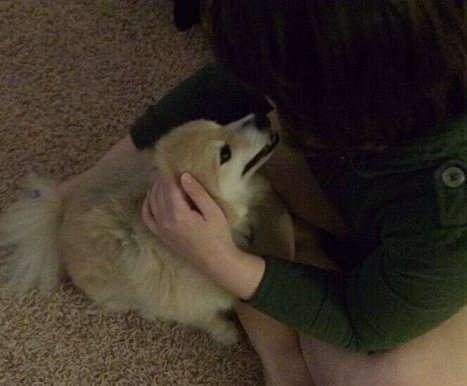Puppy Love: People and Their Relationships with Animals and Pets
Last month, Sociology Compass published a unique article by David D. Blouin on the relationship between humans and their pets. In “Understanding the Relations between People and Their Pets,” Blouin reviews the recent literature on how and why people show affection for their furry friends. Blouin explains that the current frameworks for assessing human relationships with animals are either one of caring or one of cruelty: some people treat their animals like children, while others may neglect or even act cruelly towards their pets. Ultimately, the author explains that this dichotomy is false: one person’s care may be another person’s cruelty. For example, some may view feeding their pet table scraps, dressing them up in costumes, or even restricting their environment to inside a house as love, while others see these acts as torture. At the core of this argument is that ideas about care and cruelty are culturally contingent and can vary across social statuses. Groups situated differently by race, class, gender, nationality, etc are bound to have different ideas about the treatment of animals.
This article got me thinking about PETA (People for the Ethical Treatment of Animals) and its campaign to give “backyard dogs” (dogs who live most or all of their lives outside) the shelter of dog houses and the warmth provided by hay and straw. Ideally, PETA would like all dog owners to keep their canines inside. However, when they cannot convince the pet owners that this is the right course of action, the next best thing is to provide the dogs with houses and warmth.
As a long time vegetarian, I subscribe to PETA’s email server, but I have to admit that I was conflicted when reading an email about this program back in December 2012. While I instantly related with the desire to make the dogs comfortable, I remember thinking about the classist assumptions behind PETA’s strategy. In order to assume that all dogs should remain inside, one must assume a space that is big enough to house not only people, but pets, too. What about people who do not have a large enough space for a dog? If people living on lower incomes do not have the space inside their home for a dog, would PETA say that they should not own that dog? My first reaction to this program was that there were some unexamined class privileges at work in this campaign.
Blouin’s article adds another layer of complexity to my initial concerns. What if some groups of people do not view the act of leaving their dogs outside as cruel? What if they are guided by their cultural ideas about how dogs ought to be treated? Why is it that PETA and its constituents should set the cultural norm for the treatment of dogs across space, place, and status? Should PETA make universal claims about the treatment of animals?
I do not have any good answers to these questions. While I find myself agreeing with PETA’s position on the treatment of dogs, I am reminded that this opinion is guided by my own race (white), class (middle class), citizenship (U.S.), gender (women) position. I am curious if others have thought about these issues and have come to any conclusions.
Suggested Readings:
Taylor, Nicola and Tania D. Signal. 2009. “Pet, Pest, Profit: Isolating Differences in Attitudes Towards the Treatment of Animals.” Anthrozoos: A Multidisciplinary Journal of the Interactions of People and Animals 22(2): 129-135.
Atkins-Sayre, Wendy. 2010. “Articulating Identity: People for the Ethical Treatment of Animals and the Animal/Human Divide.” Western Journal of Communication 74(3): 309-328.







There was also a great article in Contexts back in Summer ’10 called “Our Animals, Ourselves,” that might be of interest to readers: http://contexts.org/articles/summer-2010/our-animals-ourselves/
See also Leslie Irvine’s amazing books, “If You Tame Me,” a theoretically rich book on explaining the connection between humans and animals, and her brand new “My Dog Always Eats First” about homeless people and their animals. FASCINATING stuff!!
Thank you, Letta and Jen, for the additional readings!